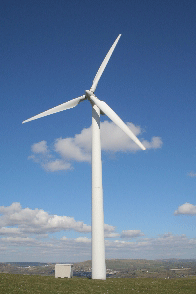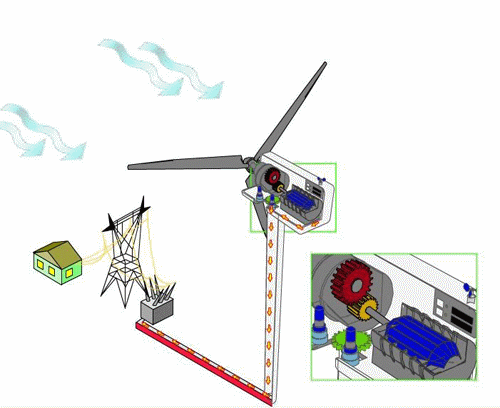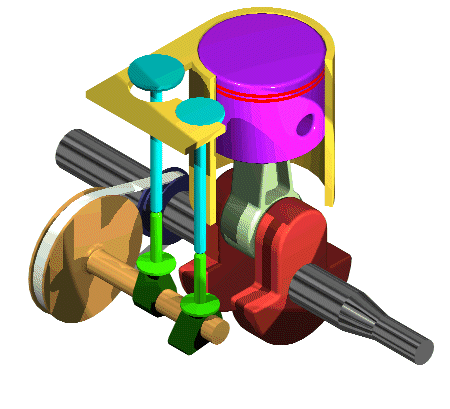 Technological
limitations
Technological
limitationsNavigating the site:
Why Things Bite Back:
Technology and the Revenge of Unintended Consequences (1997)
Systems | Engines | Murphy's Laws | New terms | Can we learn from disasters? | loosely versus tightly coupled
![]()
 "Anything
can break. Only a system can have a bug."
"Anything
can break. Only a system can have a bug."
![]()
System Effects
tightly coupled versus loosely coupled systems:
"Charles Perrow... has argued that certain technologies are so inherently unsafe that what is called 'operator error' is actually made inevitable by the way in which the parts of the system are related."
Why Things Bite Back, 1997. p. 19.
Systems | Engines | Murphy's Laws | New terms | Can we learn from disasters? | loosely versus tightly coupled
Automotive engineering for cars and trucks was largely shaped by the engine:
The interior schematic view of the internal combustion engine.
Daimler crafted an internal combustion engine in 1885 when he took his owner's ideas for a gasoline driven motor and later Daimler and Benz put them in automobiles for propulsion.
Systems | Engines | Murphy's Laws | New terms | Can we learn from disasters? | loosely versus tightly coupled
Gremlins
"the complexity of wartime systems was already bringing home to to troops and civilians how many things could malfunction."
... they called them Gremlins."
p. 22.
"Murphy's Law"
"If there's more than one way to do a job, and one of those ways will end in disaster, then somebody will do it that way."
p. 22.
"If ever anything can go wrong, it will."
Precautionary design as an example of a "fool proof" approach to user focused engineering.
"Murphy's Law is not a fatalistic, defeatist principle. Its a call for alertness and adaptation."
Seat belts in cars, for example.
"They were showing the power of innovation to master acute, sudden, catastrophic problems -- including those that other new technologies had created."
p. 23.
Systems | Engines | Murphy's Laws | New terms | Can we learn from disasters? | loosely versus tightly coupled
![]()
Learning from disasters
Good "Designers learn from failure."
"Maintenance compulsion" as a means to avoid mistakes and a powerful incentive to prevent inherent mishaps.
Chronic versus Acute problems
p. 26
Climate change contrasted with Thermonuclear weapons
p. 27
Technology's revenge revisited
"as disasters were coming under control in the West. The very means of preventing them, sometimes created the risk of even larger ones in the future."
p. 30.
Systems | Engines | Murphy's Laws | New terms | Can we learn from disasters? | loosely versus tightly coupled
![]()
The new catastrophes "are diffuse, silent processes that continue almost invisibly and usually too late."
p. 31.
"Tightly versus loosely coupled systems."
Aircraft engine (piston) is a tightly coupled and automated system.
Edward Tenner, Why Things Bite Back, 1997.
Pursell | Pacey–World | Postman | Head | Tenner |Pacey–meaning| Eberhart | Snow | Kaku | Boulding | Delillo | Kranzberg
Systems | Engines | Murphy's Laws | New terms | Can we learn from disasters? | loosely versus tightly coupled
Tools of Toil: what to read. Tools are historical building blocks of technology.

.gif)







